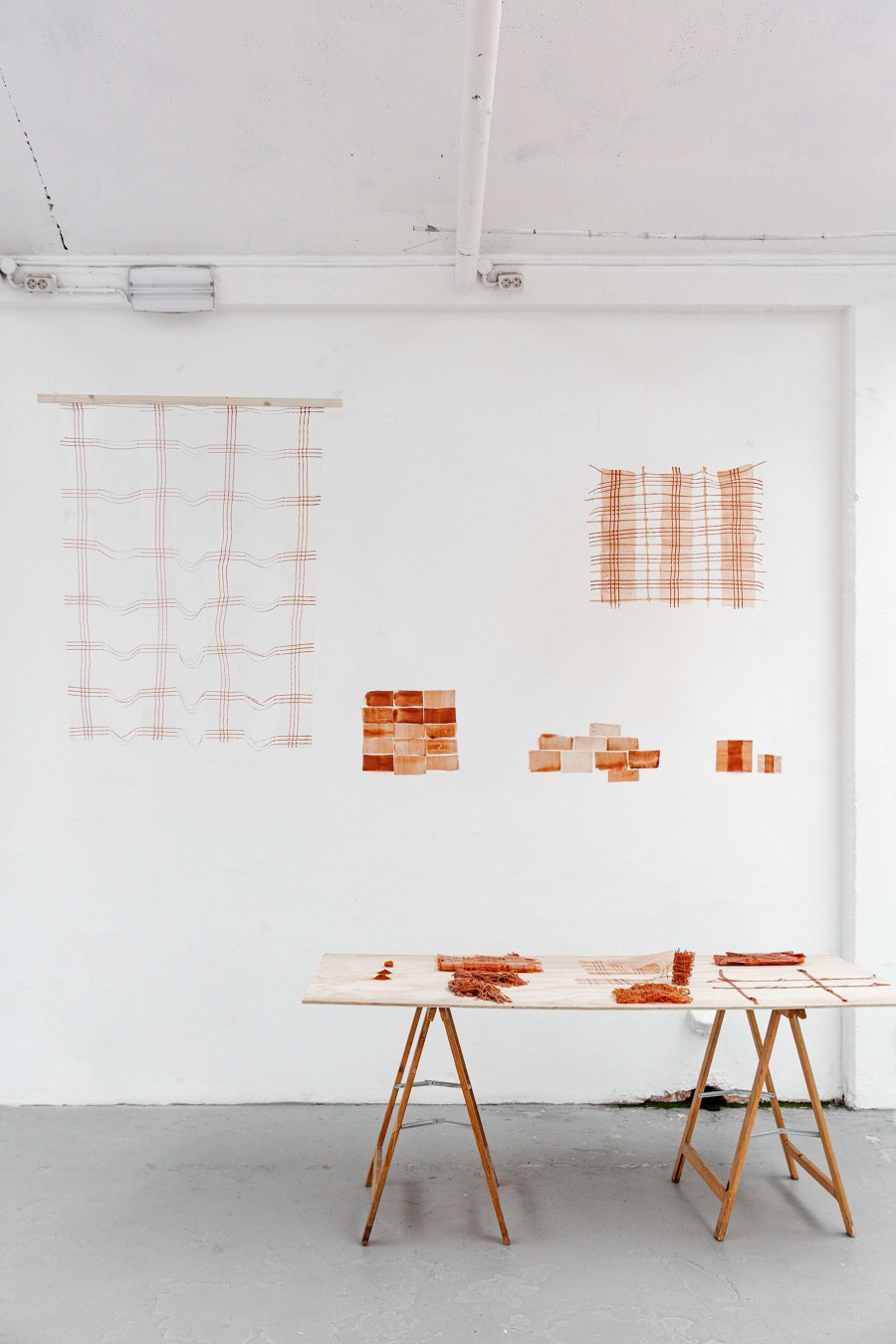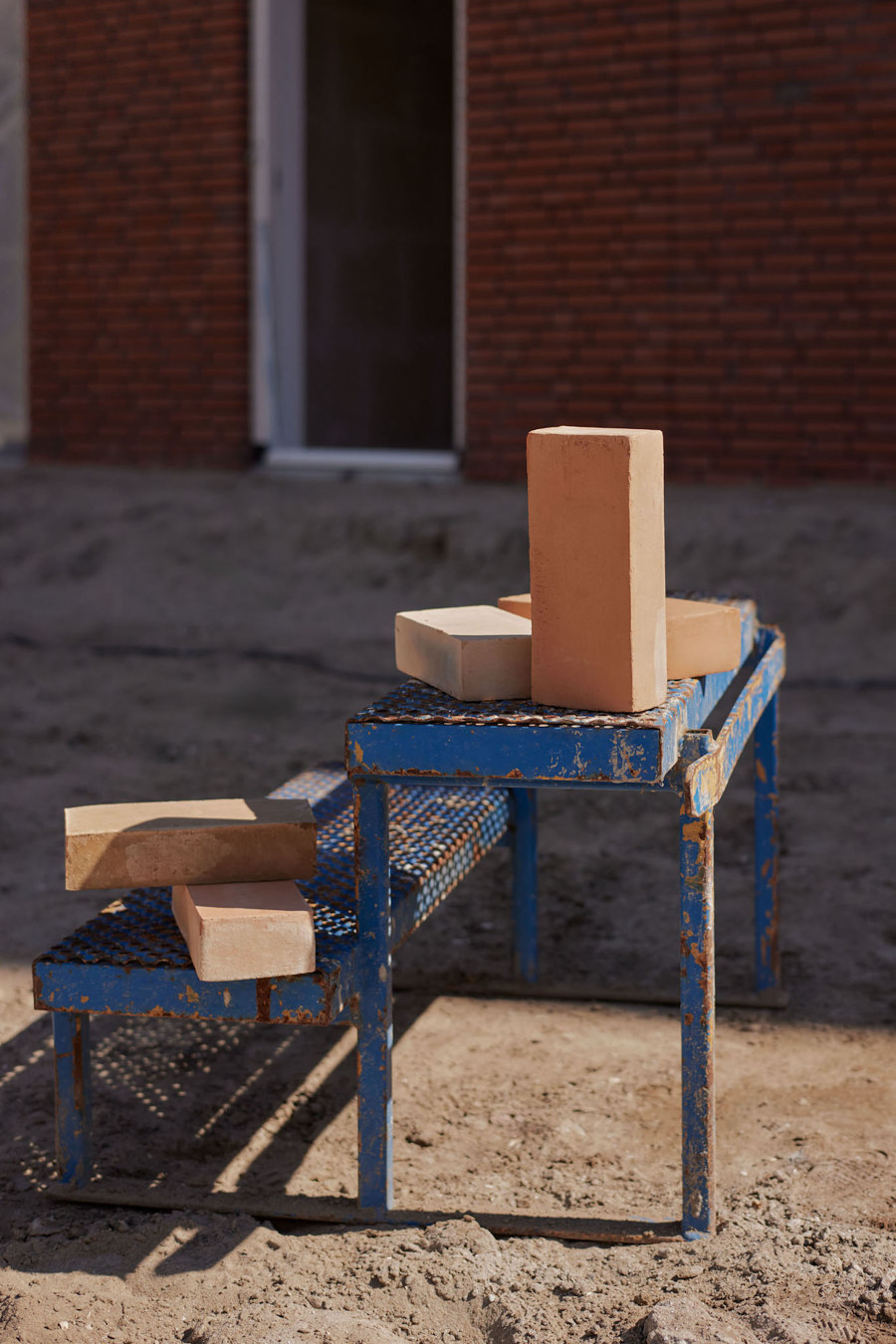Rethinking brick at Dutch Design Week 2023
Texte par Claire Brodka
24.11.23
Material innovation has become well established as a guiding principle of contemporary design. But in Eindhoven, one tried-and-tested building element in particular received not one, but multiple original modernisations.
The recycled brick building blocks of Link the system by Theresa Schwaiger were intended to show potential opportunities for developing more sustainable designs of products and materials on a larger scale. Photo: Theresa Schwaiger

The recycled brick building blocks of Link the system by Theresa Schwaiger were intended to show potential opportunities for developing more sustainable designs of products and materials on a larger scale. Photo: Theresa Schwaiger
×Brick: here, there, everywhere. When walking around Dutch Design Week 2023, which had creatives from all corners of the industry flocking to Eindhoven last month for its latest annual edition, it was almost impossible to stroll the over 110 venues without being face-to-face with a set of characteristic reddish-brown cuboids. Upon closer inspection, however, it became clear that 'characteristic' was the very last attribute the material innovators behind these displays had in mind for their products. And they weren't all cuboids, either. Or reddish-brown, for that matter.
The brick variations showcased at this year's Dutch Design Week propose to not only reduce the burden on landfills, but also provide a durable, eco-friendly and dynamic option for future construction and interiors
A general rethinking of traditional building materials in recent years has led to the development of sustainable alternatives that address environmental concerns while offering practical solutions. Brick is no exception, but by harnessing organic, discarded or recycled resources and industrial byproducts as well as rethinking classic shapes, the variations showcased at this year's Dutch Design Week propose to not only reduce the burden on landfills, but also provide a durable, eco-friendly and dynamic option for future construction and interiors.
Claybens with a sustainable brick made from PFAS-contaminated clay soil (top); Just One Brick and their circular recycled brick products (middle); A Waste Epiphany's repurposed designs (bottom). Photos: Sem Langendijk (top), Macarena Torres (bottom)

Claybens with a sustainable brick made from PFAS-contaminated clay soil (top); Just One Brick and their circular recycled brick products (middle); A Waste Epiphany's repurposed designs (bottom). Photos: Sem Langendijk (top), Macarena Torres (bottom)
×Repurposing waste
A strong element of recycling or reclaiming waste materials was present in almost all of the brick products presented, but a few stood out: Dutch startup Claybens by Emy Bensdorp presented its pilot program of bricks made from PFAS-contaminated clay soil – a particularly urgent environmental issue for the region. The firing process removes harmful toxins, and Bensdorp is optimistic about upscaling due to the preexisting infrastructure and production process. A larger project with 50,000 bricks produced from a single site is slated for 2024.
A strong element of recycling or reclaiming waste materials was present in almost all of the brick products presented
Founded in 2021 with the mission to solve the issue of ceramic waste, Yi Design Group showcased circular recycled tiles and bricks. Drawing on material from Jingdezhen in China and the 500,000 tonnes of ceramic waste buried there each year, products are classified into different product types by application. The 100-per-cent-recycled YiBrick Handmade™ for interior walls and facades, for example, features glazes made with recycled biomass, pulverised fuel ash and construction waste. Venturing further into interior territory, Delft-based company A Waste Epiphany upcycles bricks and concrete, two of the industry’s most common waste materials, into powdery-coloured tiles, vases and table legs made entirely from demolished buildings.
Tête-à-Terra (top), Link the system (middle) and brick walls and brick curtains and brick blankets (bottom) all explored ideas of spatiality and form. Photos: Lusia Sural (top), Theresa Schwaiger (middle), Anwyn Howarth (bottom)

Tête-à-Terra (top), Link the system (middle) and brick walls and brick curtains and brick blankets (bottom) all explored ideas of spatiality and form. Photos: Lusia Sural (top), Theresa Schwaiger (middle), Anwyn Howarth (bottom)
×Questioning form
Material makeup wasn't the only issue on the table. Brick projects that played with form and shape offered fertile ground for rethinking traditional notions of architectural space. Tête-à-Terra by Turkish studio ATÖLYE in collaboration with Mono Earth and Kalebodur was chief among them, towering (literally) in the centre of Strijp-S square. 'It encapsulates everything we stand for, while also showcasing this extraordinary earth brick of ceramic dust and soil from the Cappadocia region', says Director of Architectural Design at ATÖLYE, Güray Oskay. Stacked to form two curved surfaces facing each other, the unusual structure created a necessary area for play, pause and visitor encounters.
Brick projects that played with form and shape offered fertile ground for rethinking traditional notions of architectural space
A stone's throw away at Klogebouw, German Design Graduate participant Theresa Schwaiger showcased Link the system, a series of interlocking building blocks made of geopolymers from broken bricks. The cylindrical, interlocking elements reinvigorate the possibilities of brick structures with new shape and a much-reduced carbon footprint. Brick walls and brick curtains and brick blankets, a project by designer Zuzanna Skurka in collaboration with Natural Material Studio, took things even further to investigate the boundaries of tradition. Based on Skurka's final project for the Royal Danish Academy, the installation presented variations of the material pulverised and in textile form, often keeping a rectangular shape, but translating it from three into two dimensions to narrate new ways of architecture making and production.
Brick: a medium to reveal (de)colonial history (top) details the material's strong ties to Taiwan's colonial past, while Soily (bottom) rewrites old stories with earth. Photos: Dutch Design Foundation

Brick: a medium to reveal (de)colonial history (top) details the material's strong ties to Taiwan's colonial past, while Soily (bottom) rewrites old stories with earth. Photos: Dutch Design Foundation
×Rethinking history
Given the long and complicated global trajectory of brick, two projects that incorporated the material's historic weight are also worth noting. Brick: a medium to reveal (de)colonial history designed by Rising Lai explored bricklaying as a pathway to the hidden stories behind Fort Zeelandia, a former Dutch colony in present-day Taiwan. Though fragmentary in nature and supported by digital installations, the exhibition argued a successful case for precise material investigation as a tool to engage critically with history. The past had also enriched Soily, a project by Gabriele Daminaityte that reclaimed Soviet-era clinker tiles from Lithuania. In an effort to rid the objects of their stigmatised history, the designer imbued them with local soil – changing not only their surface appearance, but permeating through historic aesthetics to fit them anew to the 21st century.
. . .
© Architonic
Head to the Architonic Magazine for more insights on the latest products, trends and practices in architecture and design.













